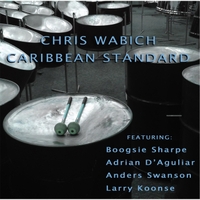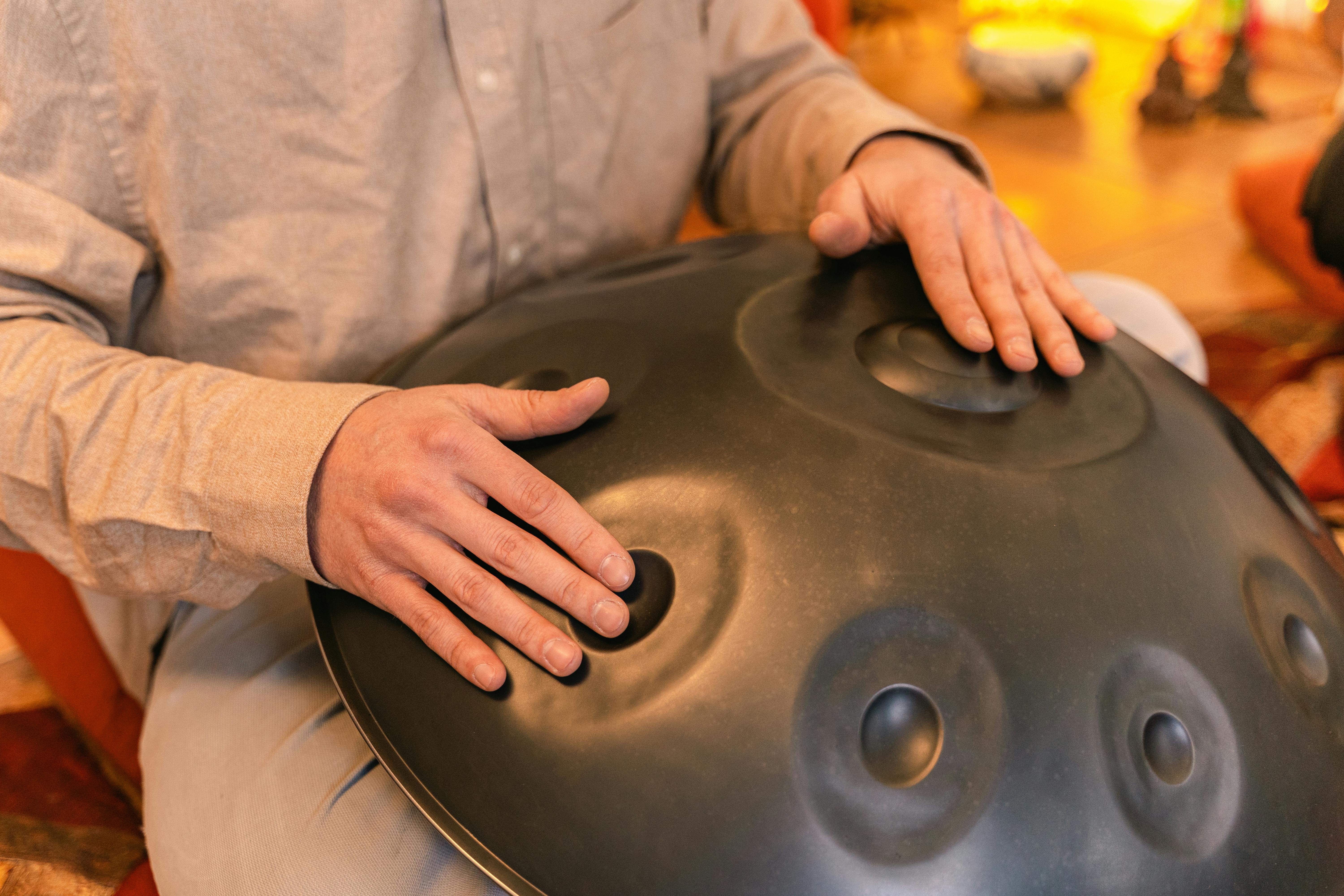 Written by Ted Goslin
Written by Ted Goslin
In December of 1997, an album was produced that almost didn’t happen.
Professional jazz drummer and pannist Chris Wabich was set to play drums on a recording session he arranged to happen. But when his 106-degree fever refused to yield, Wabich knew he was in trouble.
With the other musicians already set to play, Wabich resisted the urge to cancel, but struggled due to the strength of the virus. Just as he was making his decision, he heard it: Len “Boogsie” Sharpe began to play his double second steelpans.
Wabich immediately changed his mind. He would push through the fever and play.
The album, “Caribbean Standard,” is considered by many to be a landmark jazz album, primarily due to how its featured artist was utilized.
Sharpe, widely considered one of the greatest steelpan players and composers of all time, had never performed an album of all jazz standards before. The idea seemed obvious to Wabich, a long-time fan of Sharpe’s work and abilities. So, in late 1997, Wabich, who lives in Los Angeles, learned that Sharpe was in town performing at PASIC (Percussive Arts Society International Convention) and would be around for an extended amount of time. Considering Sharpe rarely made trips to the area, Wabich knew this was a rare opportunity and reached out to Sharpe at during the event with an idea.
“When I spoke to ‘Boogsie’ I told him he’s pretty much the greatest jazz pannist who’s ever lived just by the amount of spontaneity he has to play anything he wants in the moment. Typically when he’s featured in jazz it’s with a super loud band and he has to beat his pans loudly,” Wabich said. “The idea with this was to feature him as a soloist with a trio with every note. But at the time I didn’t know of his ability to back himself up while playing the melody. It sounds like it’s completely worked out but it’s not. He could play a solo concert and you wouldn’t miss anything.”
To feature Sharpe in the appropriate light, Wabich and bass player Adrian D’Aguliar came up with a list of songs they knew Sharpe was familiar with. The strategy paid off.
“Pretty much everything on that record is the first take. There were more takes we didn’t put on it, with three, maybe four hours of music we recorded. We recorded 12 tracks. There was some great stuff on the other ones, but felt the album’s tracks were more concise statements,” Wabich said. “He explained to me that he practices with his fingers. He thinks of the pans like piano. On doubles, there are six pitches per side. You have five fingers and the palm of your hand is number 6. He practices with those where the notes are.”
In addition to the recording, Sharpe also performed at a concert that Wabich had booked with his steelband, PANic, which played several arrangements by Sharpe. A separate album was released of PANic playing studio tracks and some tracks from the live concert with Sharpe, including his classic Panorama pieces “Woman is Boss” and “Fire Down Below”.
Wabich explained that Sharpe was open to playing the show due to his eagerness to play his pieces with the group and to hear some of the steelpans that Wabich, also a builder and tuner of pans, had made.
“He was psyched to play those charts. He wanted to check out some of the pans he heard I made,” Wabich said. “A couple weeks later there were a lot of people in LA that called me that said ‘Boogsie’ was raving about my pans. Before that time, there were a lot of people that wouldn’t let me tune their drums and were skeptical.”
Also featured on the album were upright bassist Anders Swanson (live tracks only) and established jazz guitarist Larry Koonse. Having those specific players was intentional, according to Wabich, to help establish the album into what it is today, known to many players far and wide as a record that any aspiring pan player should have in their collection.
“Boogsie is recognized in a certain percenatge of pan players, mostly by his compositions. There are a couple records out there that have him but not many,” Wabich emphasized. “The whole point of having him do this was to show he can do this and play anything. I want people to recognize that this is the type of bar that should be set. If you’re a pan player and really want to be a badass, you should transcribe his stuff. If you don’t, you’re playing pan for a different reason. It’s a certain standard that he set.”
Wabich isn’t the only person who sees the importance of Sharpe’s influence on both steelpan and music as a whole. Steelpan virtuoso and composer Liam Teague uses the album as a teaching tool for his students at Northern Illinois University.
“All of our steelpan majors at NIU are required to do transcriptions, even if their ultimate goal is not to become seasoned improvisers. I treat lessons in a holistic manner, in that I believe musicians can be influenced by each other, irrespective of the musical style/genre,” Teague said. “For example, we may look at a particular line that ‘Boogsie’ played over a ii-7 V7- I chord progression, and discuss how his approach could be used in an arrangement or composition that students may be working on. Since most people outside of Trinidad and Tobago may not have the luxury of taking a lesson with Len ‘Boogsie’ Sharpe, I feel that transcribing his creative work is essential.”
Teague’s students, he added, examine Sharpe’s manner of playing a melody while simultaneously accompanying said melody. “This is a skill that a number of early masters of the steelpan possessed, but for many of the newer generation of players, how to acquire this skill set remains a mystery. I try to demystify some of it.”
Considering the lack of promotion steelpan albums receive these days, players have limited options when it comes to finding and transcribing creative works to learn from. With that in mind, Wabich re-released the album this past summer to see that the work has its place in steelpan history and its importance is not lost. According to Teague, recordings like this are not just recommended, but required listening to assure that a musician like Sharpe receives the recognition he deserves in his service of music.
“There are so many people that have not had the opportunity to hear this enigma of a musician live (especially in the USA). I travel around the country performing with and lecturing to college and high school students, and many of them are not intimately familiar with ‘Boogsie’s’ work. This is akin to not knowing the creative output of Mozart, Charlie Parker, Stevie Wonder, etc. I think that we need to take advantage of the fact that through his recordings (and other steelpan masters, of course), we can digest a wealth of information,” Teague explained. “I think ‘Boogsie’ successfully marries creativity and virtuosity, and the profundity of his musicianship remains a daily source of inspiration to me.”
The album is available for digital download on CD Baby.
Sharpe performs various pieces at a steelband festival in Switzerland in 2002.







